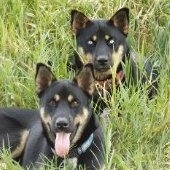Good Grass For Grazing.
-
Recently Browsing 0 members
- No registered users viewing this page.
Announcements
-
Topics
-
-
Popular Contributors
-
-
Latest posts...
-
127
‘Putin clearly won’: Pundits say meeting was ‘bad for Americans’
Trumps Gaza Hotels -
28
USA Trump’s Bold D.C. Crime Crackdown Unfolds on National Mall
Aye, you're determined. The Speaker controls the Capital Police Board via the Sergeant at Arms. So yes, while they don't sit on the board they control and direct what happens. Do a victory lap. At the end of the day my basic point stands. What happens within the Congresdional cartilage is the responsibility of the Speaker - not the President. -
32
Anybody seen this Dem Sandwich Slinger now X DOJ?...
I'm not going to defend him either, appears guilty to me. He attacked an officer with a Deli weapon, who was treated for his injuries at the Mayo Clinic -
127
‘Putin clearly won’: Pundits say meeting was ‘bad for Americans’
Amongst other things, this war has had a major negative effect on energy supplies in Europe, disrupted other supply lines, led to an influx of refugees from Ukraine and cost EU member states +/-$180bn to date in aid and grants to Ukraine. Other than a few defence companies whose profits have increased, pray tell what other benefits prolonging this war will bring for the EU (and/or the UK for that matter)? -
93
UK 474 Arrested at London Protest Against Palestine Action Ban
It's not the 'Israelites'. They've been brainwashed with 80% of Israelis supporting the annihiliation of the Palestinians The root is the corruption of the warmonger govt and its IDF lackeys. They were ready--all they needed was October 7th to start the game. The conscientious objector kids are the only hope for a free, meaning not racist, society in Israel. A two-state solution and removal of the greedy, racist settlers. -
9
Has anyone had this happen?
I did consider that, but I don't believe it's counterfeit. The packaging looks exactly like the genuine article with crisp printing and no spelling mistakes. There is even a QR code leading to product details on the Thai Industrial Standards institute, where you can also file a complaint about product not meeting standards.
-
-
Popular in The Pub










Recommended Posts
Create an account or sign in to comment
You need to be a member in order to leave a comment
Create an account
Sign up for a new account in our community. It's easy!
Register a new accountSign in
Already have an account? Sign in here.
Sign In Now